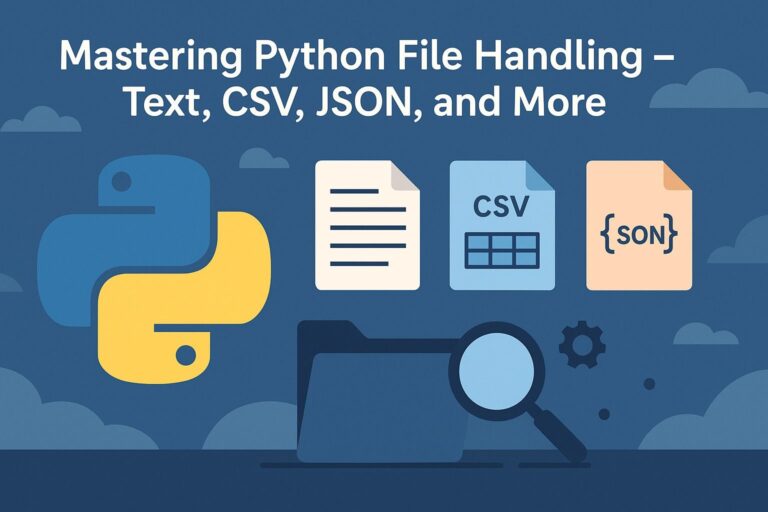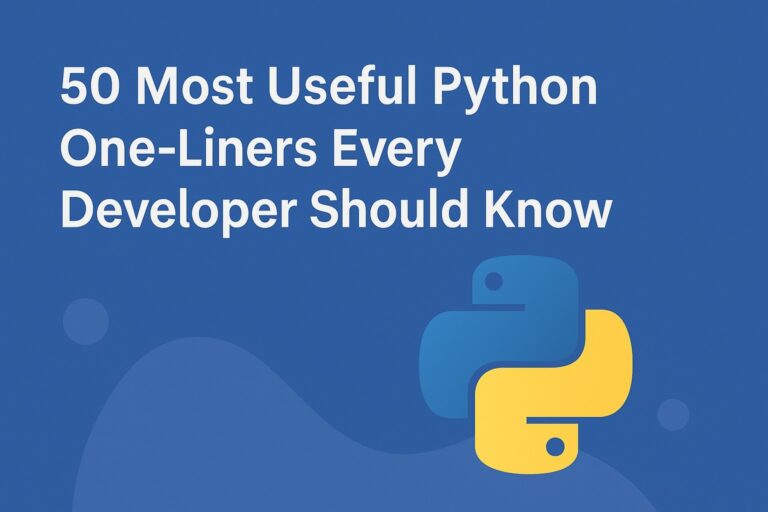
Artificial Intelligence (AI) is reshaping the landscape of data analytics and decision-making across industries. While traditional analytics has provided organizations with the ability to understand historical performance through descriptive and diagnostic data, AI now enables predictive and prescriptive analytics—allowing businesses to forecast future outcomes, simulate scenarios, and make intelligent recommendations.
AI-powered analytics not only automates routine tasks but also empowers organizations to process vast amounts of data at scale, uncover hidden patterns, and derive actionable insights in real time. As a result, decision-making becomes faster, more accurate, and more aligned with business objectives.
1. Automating Data Collection and Preparation
Data collection and preparation are often the most time-consuming phases in analytics. AI significantly streamlines this process by automating tedious tasks and improving data quality.
Capabilities:
- Automatically pulls data from multiple structured (databases, spreadsheets) and unstructured (emails, PDFs, social media) sources
- Uses AI-based deduplication, normalization, and transformation techniques to prepare data for analysis
- Continuously monitors and updates data pipelines with minimal human intervention
- Identifies anomalies, missing fields, and inconsistencies during ingestion
Advanced Techniques:
- Robotic Process Automation (RPA) for repetitive data entry
- Natural Language Processing (NLP) for extracting information from text
- Optical Character Recognition (OCR) for digitizing scanned documents and handwritten forms
- AI-based ETL (Extract, Transform, Load) pipelines that learn and adapt over time
Use Case Example:
A logistics company uses AI to integrate shipping data from Excel sheets, customer emails, and scanned invoices into a single, cleaned dataset for real-time delivery analysis.
Popular Tools:
- Alteryx with machine learning automation
- Talend Data Fabric
- Trifacta Wrangler (by Google Cloud)
- Apache NiFi
2. Enhancing Data Visualization and Exploration
Traditional dashboards often limit users to predefined charts and KPIs. AI enhances data exploration by enabling adaptive visualizations and intelligent assistance.
Key Benefits:
- Recommends the most relevant charts and dimensions based on the dataset and user goals
- Enables non-technical users to interact with data using natural language queries
- Surfaces insights that users might not manually detect (e.g., unusual sales trends)
- Visualizes relationships between multiple data points using graph analysis
Features:
- Automated insight generation (“What’s driving the sales drop?”)
- Voice and chat-based query interfaces
- Drill-down and drill-through recommendations
Use Case Example:
A retail manager types “Why were March sales down in Region B?” into a BI tool. The AI identifies underperforming products and correlates them with competitor promotions in the same region.
Tools:
- Tableau with Einstein Discovery
- Microsoft Power BI (with Copilot and Smart Narrative)
- Qlik Sense Insight Advisor
- ThoughtSpot
3. Predictive Analytics and Forecasting
Predictive analytics uses AI and machine learning algorithms to forecast future trends, risks, and opportunities based on historical data.
Applications Across Industries:
- Retail: Forecast demand to avoid stockouts or overstocking
- Finance: Predict credit defaults or market movements
- Healthcare: Forecast patient readmission risk or disease outbreaks
- Marketing: Predict customer churn and optimize lifetime value
AI Techniques:
- Regression and classification models
- Decision trees, random forests, and gradient boosting
- Time-series forecasting (ARIMA, Prophet, LSTM)
- Ensemble and hybrid models for complex datasets
Use Case Example:
An airline uses AI to predict ticket demand for specific routes and adjusts prices dynamically to maximize revenue.
AI Platforms:
- H2O.ai
- IBM Watson Studio
- Amazon SageMaker
- Google Cloud AutoML Tables
4. Real-Time Analytics and Anomaly Detection
Real-time analytics empowers organizations to act instantly on data, while AI-driven anomaly detection ensures nothing critical is missed.
Benefits:
- Enables 24/7 monitoring of operations, customer behavior, and system performance
- Detects subtle shifts in behavior that may indicate fraud, outages, or safety issues
- Reduces the mean time to detect (MTTD) and mean time to resolve (MTTR) critical incidents
- Improves customer trust and operational resilience
Advanced Approaches:
- Unsupervised learning (e.g., k-means clustering, isolation forests) for detecting novel anomalies
- Stream processing frameworks like Apache Kafka and Apache Flink with real-time ML integration
Use Case Example:
A fintech platform detects unusual login behavior and triggers a security alert before any damage is done.
Popular Tools:
- Datadog AI Watchdog
- Anodot
- Azure Stream Analytics with anomaly detection
- Sumo Logic
5. Prescriptive Analytics and Decision Support
Prescriptive analytics uses AI to recommend optimal decisions by simulating scenarios, constraints, and possible outcomes.
Capabilities:
- Identifies the best actions based on business objectives (maximize revenue, minimize risk)
- Accounts for constraints such as budget, time, supply, or labor availability
- Runs “what-if” simulations and optimization models
- Incorporates reinforcement learning for continuous policy improvement
Use Case Example:
A manufacturing company uses AI to allocate raw materials across factories to minimize shipping costs while meeting demand.
Key Tools:
- IBM Decision Optimization
- Google OR-Tools
- AIMMS Prescriptive Analytics
- SAP IBP (Integrated Business Planning)
6. Natural Language Processing (NLP) for Text Insights
NLP allows organizations to tap into massive volumes of unstructured text data and transform it into actionable intelligence.
Applications:
- Extracting themes and sentiment from customer reviews, surveys, or support tickets
- Automatically classifying and tagging documents
- Identifying emerging issues and pain points in customer communications
- Generating summaries from large documents or meetings
NLP Techniques:
- Named Entity Recognition (NER)
- Text summarization
- Sentiment analysis
- Topic modeling and clustering
Use Case Example:
An e-commerce brand uses NLP to monitor reviews in real-time and automatically flag products with rising negative sentiment.
Tools:
- OpenAI GPT models
- AWS Comprehend
- Hugging Face Transformers
- MonkeyLearn
7. Augmented Analytics for Business Users
AI makes analytics more accessible by augmenting the decision-making process with intelligent recommendations and natural language interactions.
Features:
- Chatbots and virtual assistants to guide users through data exploration
- Auto-generated narratives and insights (e.g., “Sales dropped 12% due to Product B in Region West”)
- Role-based recommendations based on past interactions and business context
Use Case Example:
A sales manager receives daily summaries of key pipeline changes and AI-generated suggestions for at-risk deals.
Top Platforms:
- Salesforce Tableau CRM (formerly Einstein Analytics)
- Sisense Fusion
- Oracle Analytics Cloud with AI Insights
- ThoughtSpot Sage
8. Enhancing Data Culture and Strategic Planning
Beyond individual tasks, AI fosters a broader culture of evidence-based decision-making.
Cultural Benefits:
- Reduces reliance on gut feelings or top-down assumptions
- Encourages all departments to measure performance with data
- Empowers frontline staff with real-time feedback
- Facilitates agile planning through scenario modeling and simulations
Strategic Impacts:
- Aligns decision-making across departments with consistent data models
- Supports OKRs (Objectives and Key Results) with AI-driven KPI tracking
- Enhances boardroom decisions with simulation-backed forecasts
Use Case Example:
A nonprofit uses AI to forecast fundraising outcomes and simulate different campaign strategies to choose the one with the highest expected impact.
Final Thoughts
AI is fundamentally transforming data analytics from a backward-looking reporting function to a forward-looking, strategic advantage. By leveraging machine learning, natural language processing, and automation, AI empowers organizations to:
- Extract faster, deeper insights from vast datasets
- Predict future trends with high accuracy
- Prescribe optimal decisions based on real-world constraints
- Democratize access to insights for non-technical users
- Enhance organizational agility and resilience
For businesses that aim to stay competitive in today’s data-driven economy, integrating AI into the analytics pipeline is no longer optional—it’s essential.
Organizations that invest in AI-driven analytics will be better equipped to anticipate change, reduce risk, and innovate with confidence.

I’m Shreyash Mhashilkar, an IT professional who loves building user-friendly, scalable digital solutions. Outside of coding, I enjoy researching new places, learning about different cultures, and exploring how technology shapes the way we live and travel. I share my experiences and discoveries to help others explore new places, cultures, and ideas with curiosity and enthusiasm.






